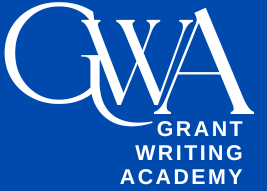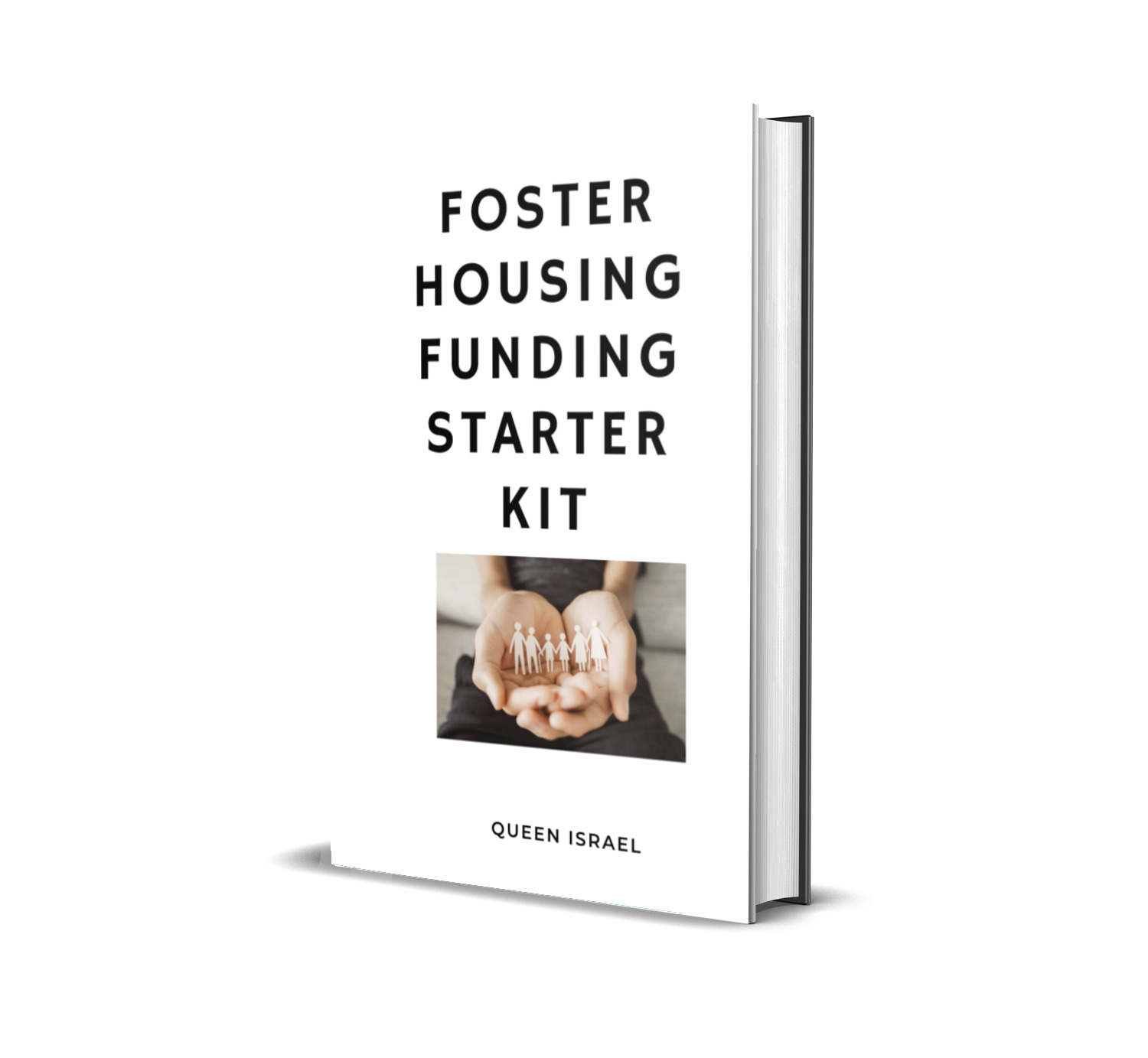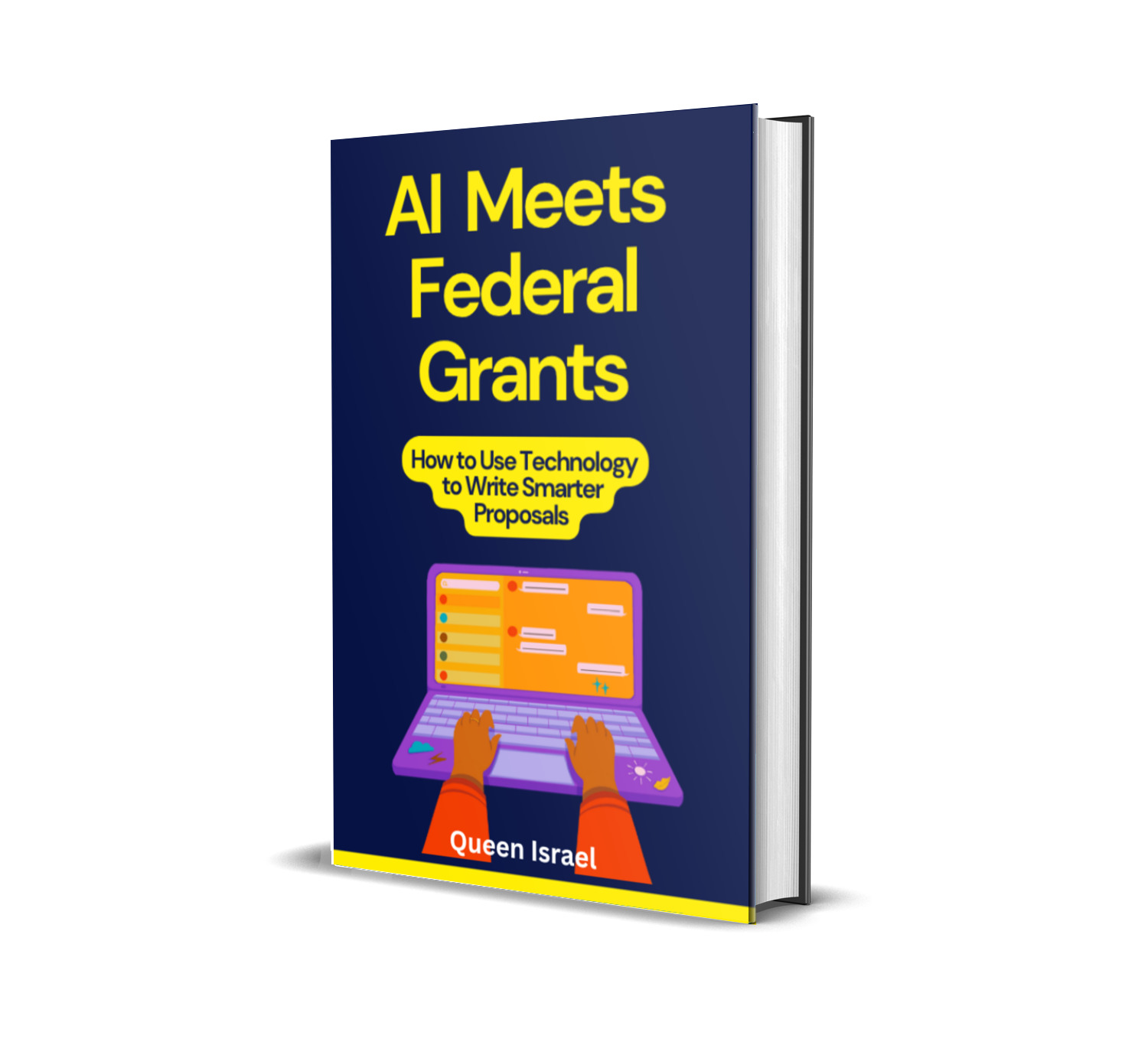Grants for women are a powerful tool to empower women entrepreneurs, nonprofits, and individuals who aim to create positive changes in their communities.
With the right knowledge and approach, writing grants for women can unlock endless opportunities for progress. Whether you’re a seasoned grant writer or just getting started, this guide will break down the essential steps to successfully secure funding for women-centric initiatives.
In recent years, women-led businesses and nonprofits have been growing at an unprecedented rate.
According to the National Women’s Business Council, women-owned businesses now represent nearly 42% of all businesses in the United States, contributing over $1.8 trillion to the economy. Yet, despite these impressive statistics, many women face unique challenges when it comes to securing funding.
Understanding how to craft a compelling grant proposal tailored specifically for women-led projects can make a significant difference.
Why Grants for Women Matter
Before diving into how to write grants, it’s crucial to understand the importance of women-focused funding. Grants are a great equalizer, enabling women to access resources for education, businesses, healthcare, and social causes.
According to a report from Forbes, investing in women’s economic empowerment could add up to $28 trillion to global GDP by 2025. This highlights not only the importance of grants but also the massive potential for women’s initiatives to drive real change.
However, many funding sources still have barriers when it comes to women. That’s why grants for women are vital. They provide an opportunity to bridge the gender gap in entrepreneurship, innovation, and leadership. Additionally, women often prioritize community-centric projects, sustainability, and social impact, aligning perfectly with the objectives of many grant-making organizations.
Step 1: Understanding the Types of Grants Available for Women
The first step in writing grants for women is understanding the types of grants available. There are various kinds of grants that focus on empowering women, ranging from federal and state funding to private foundations and corporate grants. Here are some common types:
- Federal Grants for Women: The U.S. government offers a variety of grants specifically aimed at promoting women’s businesses, education, and health. The Small Business Administration (SBA), for instance, provides funding through the Women’s Business Center (WBC) program. WBCs offer support to female entrepreneurs, providing resources and training.
- Private and Corporate Grants: Many private foundations, corporations, and non-profits offer grants specifically for women. For example, the Eileen Fisher Women-Owned Business Grant provides funding for women-led businesses committed to social change. Similarly, The Tory Burch Foundation offers fellowships and grants to empower female entrepreneurs.
- Educational Grants for Women: There are numerous scholarships and educational grants designed to assist women in advancing their careers and academic pursuits. AAUW (American Association of University Women) is one of the leading organizations offering educational grants, with a particular focus on helping women in STEM (Science, Technology, Engineering, and Mathematics).
- Nonprofit and Social Change Grants: Many grants are available for women-led nonprofits that focus on creating social change, addressing gender-based violence, or improving the welfare of women in underrepresented communities. Grants like the Global Fund for Women support initiatives that promote women’s rights and equality worldwide.
- Health and Wellness Grants: These grants focus on improving women’s health and wellness, addressing issues such as reproductive health, mental health, and access to healthcare services. The Women’s Health Research Institute often funds projects that aim to enhance women’s health outcomes.
- Arts and Culture Grants: For women involved in the arts, there are grants that support creative projects, cultural initiatives, and artistic endeavors. The National Endowment for the Arts and various private foundations offer grants to female artists and cultural organizations.
Step 2: Researching Grant Opportunities for Women
With the right knowledge and strategy, identifying the best funding opportunities becomes much easier. The key is researching extensively. Using the right tools, websites, and databases, you can find relevant grant opportunities tailored specifically to women.
Useful resources for grant research include:
- Grants.gov: This is the federal government’s official website for finding and applying for grants. It has a vast database of opportunities across various sectors.
- Foundation Directory Online: This platform provides access to detailed profiles of thousands of foundations that offer funding to women-led initiatives.
- Instrumentl: A search engine specifically designed for grant research, Instrumentl helps find opportunities across multiple sectors, including women’s empowerment.
- GrantWatch: Lists grants available to nonprofits, small businesses, and individuals, with filters to narrow down to women-specific grants.
- The Grantsmanship Center: Offers resources and training for grant writers, including information on grants for women.
Tip: Pay close attention to eligibility requirements for each grant. Some may focus on women from specific backgrounds, such as minorities or veterans, while others may have geographical restrictions. Additionally, consider the mission and priorities of the grant-making organization to ensure alignment with your project.
Step 3: Writing a Winning Grant Proposal for Women
Once you’ve identified the perfect grant opportunity, it’s time to dive into the proposal. Writing a successful grant proposal involves articulating a clear vision, aligning your project with the funder’s goals, and demonstrating why your initiative deserves support. Below are the key components of an effective grant proposal:
1. Executive Summary
The executive summary is the first impression the reviewer will have of your project, so make it count! This section should be concise (one or two paragraphs) and summarize your project’s goals, its impact on women, and how you will use the funds.
- Tip: Always connect your project to a broader cause. How will this funding help reduce gender disparities, create jobs, or improve women’s access to education and healthcare?
Example: “Empowering Women in Tech is a 12-month program designed to provide comprehensive training and mentorship to 100 women aspiring to enter the technology sector. With a grant of $50,000, we will offer coding boot camps, career counseling, and networking opportunities to bridge the gender gap in tech industries, fostering economic independence and innovation.”
2. Statement of Need
In this section, outline the issue your project seeks to address. Use data and compelling storytelling to highlight why this issue is important to women in your community or field.
- Example: If you’re applying for a grant aimed at supporting women in tech, you might cite statistics like, “Only 28% of the workforce in technology is made up of women (NCWIT), which demonstrates a need for initiatives aimed at closing the gender gap.”
Additional Tip: Incorporate personal stories or testimonials from women who have faced the challenges your project aims to address. This adds a human element and underscores the real-world impact of your initiative.
3. Project Description
This is the core of your grant proposal. Clearly explain the goals, activities, timeline, and expected outcomes of your project. Make sure you define measurable goals and use a timeline that aligns with the funder’s expectations.
- Example: “Our program will offer 50 scholarships for women in underserved communities to attend a 12-week coding boot camp. Additionally, we will provide mentorship from industry professionals and facilitate job placements upon completion.”
Subsections to Include:
- Objectives: Specific, measurable goals you aim to achieve.
- Methods: Detailed plan of action, including activities and strategies.
- Timeline: Clear schedule of project milestones and deadlines.
- Outcomes: Expected results and how they will benefit women and the community.
4. Budget
Your budget should be clear, realistic, and specific. Ensure that all costs are accounted for, and include a narrative to justify the expenses. Don’t forget to mention how the grant will be used specifically for women-focused activities.
- Tip: Break down the budget into categories like personnel, materials, administration, etc., and be transparent about the allocation.
Example:
| Budget Item | Amount |
|---|---|
| Program Coordinator | $20,000 |
| Coding Boot Camps | $15,000 |
| Marketing & Outreach | $5,000 |
| Mentorship Program | $5,000 |
| Administrative Costs | $5,000 |
| Total | $50,000 |
Budget Narrative: “The majority of the grant funds will be allocated to hiring a dedicated program coordinator who will oversee the implementation and management of the coding boot camps. Funds will also support the development of marketing materials to reach potential participants and the establishment of a mentorship program to provide ongoing support for graduates.”
5. Sustainability
Funders are more likely to invest in projects that have long-term sustainability. Explain how your project will continue after the initial funding runs out, whether through earned income, additional grants, or community support.
- Example: “After the first year, Empowering Women in Tech will sustain its operations through a combination of program fees, corporate sponsorships, and continued grant applications. Additionally, we plan to establish partnerships with local tech companies to provide ongoing internships and job placements for our graduates.”
Additional Tip: Highlight any existing support or commitments from partners, stakeholders, or the community that will contribute to the project’s longevity.
6. Evaluation
It’s crucial to demonstrate how you will measure the success of your project. Define key performance indicators (KPIs) like the number of women served, improvements in their skills, or the number of women-led businesses created as a result of your program.
- Example: “We will track the number of participants who complete the coding boot camp, secure internships or jobs in the tech industry, and their long-term career progression. Surveys and feedback forms will be used to assess participant satisfaction and skill development.”
Subsections to Include:
- Evaluation Methods: Tools and techniques used to collect data.
- Data Collection: How and when data will be gathered.
- Analysis: How the data will be interpreted to assess progress.
- Reporting: How findings will be communicated to stakeholders and funders.
Step 4: Addressing the Gender Gap in Grant Writing
Many women-led initiatives face an additional hurdle—gender bias in the grant writing process. To overcome this, focus on the unique strengths that women bring to the table. Women tend to prioritize community impact, empathy, and long-term sustainability, which are highly attractive to funders who want to see lasting change.
Strategies to Address Gender Bias:
- Highlight Collaborative Efforts: Emphasize partnerships and community involvement. Funders appreciate projects that foster collaboration and collective impact.
- Showcase Leadership and Expertise: Clearly demonstrate the qualifications and experience of your team. Highlighting strong leadership can counteract biases by showcasing competence and reliability.
- Use Data-Driven Arguments: Support your proposal with robust data and evidence. Objective information can help mitigate subjective biases.
- Focus on Impact: Clearly articulate the tangible and intangible benefits of your project. Highlight how your initiative will create meaningful change for women and the broader community.
- Incorporate Diverse Perspectives: Show that your project is inclusive and considers the needs of diverse groups of women. This demonstrates a comprehensive understanding of the issues at hand.
Example: “Our initiative not only provides technical training but also fosters a supportive community where women can share their experiences and build networks. By incorporating mentorship from diverse industry leaders, we ensure that our participants receive well-rounded support tailored to their unique needs.”
Step 5: Submitting the Grant Proposal
After you’ve written your proposal, it’s time for submission. Pay close attention to submission guidelines and deadlines. Many grant opportunities have strict submission rules—follow them to the letter!
Checklist Before Submission:
- Review Guidelines: Ensure your proposal meets all the funder’s requirements regarding format, length, and content.
- Proofread: Check for grammar, spelling, and formatting errors. A polished proposal reflects professionalism.
- Compliance: Verify that all necessary documents, such as letters of support or financial statements, are included.
- Formatting: Adhere to any specified formatting rules, such as font size, margins, and document structure.
- Deadlines: Submit your proposal well before the deadline to avoid last-minute issues.
Additional Tips:
- Tailor Each Proposal: Customize your proposal to align with each specific grant’s mission and priorities.
- Use Clear and Concise Language: Avoid jargon and overly complex sentences. Your proposal should be easy to understand.
- Highlight Unique Selling Points: Clearly articulate what sets your project apart from others and why it deserves funding.
Step 6: Following Up
Don’t forget to follow up after submission. If possible, request feedback on your application, whether it’s accepted or not. This feedback will help you refine your future proposals.
Steps for Effective Follow-Up:
- Send a Thank-You Note: Express gratitude to the funder for considering your proposal. This leaves a positive impression and maintains a good relationship for future opportunities.
- Request Feedback: Politely ask for feedback on your application. Understanding the strengths and weaknesses of your proposal can be invaluable for future submissions.
- Stay Connected: Keep the funder informed about the progress of your project, especially if you receive the grant. Regular updates can pave the way for continued support.
Example: “Thank you for reviewing our grant proposal for Empowering Women in Tech. We appreciate the opportunity to present our initiative and would be grateful for any feedback you could provide to help us improve future submissions.”
Common Mistakes to Avoid in Grant Writing for Women
Writing grants can be challenging, and it’s easy to make mistakes that could jeopardize your chances of securing funding. Here are some common pitfalls to avoid:
- Lack of Clarity: Ensure that your proposal is clear and concise. Avoid vague statements and ensure that your objectives and methods are well-defined.
- Ignoring Guidelines: Each grant has specific guidelines. Failing to adhere to them can result in immediate disqualification.
- Weak Statement of Need: Your proposal must convincingly demonstrate the need for your project. Use relevant data and compelling narratives to make your case.
- Unrealistic Budget: Be realistic and transparent in your budgeting. Overestimating or underestimating costs can raise red flags for funders.
- Poor Organization: A disorganized proposal can be difficult to follow. Use headings, subheadings, and bullet points to enhance readability.
- Lack of Evidence: Support your claims with data, research, and evidence. Funders want to see that your project is grounded in reality and has a solid foundation.
- Ignoring Sustainability: Funders are interested in projects that can continue beyond the grant period. Clearly outline your sustainability plan.
Advanced Strategies for Successful Grant Writing
To further enhance your grant writing skills, consider implementing these advanced strategies:
- Build Relationships with Funders: Establishing a rapport with potential funders can give you an edge. Attend their events, engage with their content on social media, and understand their funding priorities.
- Collaborate with Other Organizations: Partnerships can strengthen your proposal by demonstrating community support and shared resources. Collaborate with other nonprofits, businesses, or community groups to enhance your project’s impact.
- Leverage Success Stories: Highlight past successes to build credibility. Showcase previous projects that have achieved significant outcomes, particularly those led by women.
- Utilize Technology and Tools: Use grant management software and tools to streamline the research and writing process. Tools like GrantHub or Fluxx can help manage deadlines, track applications, and store important documents.
- Continuous Learning: Stay updated on the latest grant writing trends and best practices. Attend workshops, webinars, and training sessions to continually improve your skills.
- Tailor Your Storytelling: Craft a compelling narrative that resonates with the funder’s mission. Use storytelling techniques to make your proposal engaging and memorable.
Example: “In our previous year, the Women in Leadership program successfully mentored 75 women, leading to a 60% increase in their career advancements. This success demonstrates our capability to drive meaningful change and underscores the potential impact of continued funding.”
Utilizing SEO Keywords in Grant Writing for Women
Incorporating SEO-friendly keywords into your grant writing can improve the visibility of your initiatives online, attracting more attention and potential funders. Here are some common keywords and phrases to consider:
- Women Empowerment
- Women Entrepreneurs
- Female Leadership
- Women in STEM
- Gender Equality
- Women’s Health
- Women-Owned Business Grants
- Women-Led Nonprofits
- Funding for Women
- Women’s Education Grants
- Support for Women in Business
- Women’s Economic Empowerment
- Grant Opportunities for Women
Tip: Use these keywords naturally within your proposal, website, and promotional materials to enhance searchability and reach a broader audience.
Real-Life Examples of Successful Grants for Women
To inspire you, here are a few real-life examples of successful grants aimed at empowering women:
- The Tory Burch Foundation Fellowship:
- Objective: To support emerging women entrepreneurs by providing funding, education, and networking opportunities.
- Impact: The fellowship offers a $5,000 grant, access to a $500,000 loan fund, and a year-long fellowship program to help women grow their businesses.
- Eileen Fisher Women-Owned Business Grant:
- Objective: To support women-led businesses that are committed to social change.
- Impact: Grants range from $10,000 to $100,000, helping women entrepreneurs scale their businesses and expand their impact.
- AAUW Career Development Grants:
- Objective: To assist women in advancing their careers through education and professional development.
- Impact: Provides funding for women to pursue graduate studies, conduct research, or develop leadership skills, particularly in fields where women are underrepresented.
Leveraging Data and Statistics in Your Proposal
Incorporating relevant data and statistics can strengthen your grant proposal by providing evidence of the need and potential impact of your project. Here are some ways to effectively use data:
- Highlight Key Statistics: Use up-to-date and relevant statistics to illustrate the problem your project addresses.
- Example: “According to the Bureau of Labor Statistics, women make up only 47% of the workforce in the United States, with significant underrepresentation in leadership roles.”
- Use Graphs and Charts: Visual representations of data can make your proposal more engaging and easier to understand.
- Cite Reliable Sources: Ensure that all data is sourced from reputable organizations to maintain credibility.
- Benchmarking: Compare your project’s goals with industry standards or similar successful projects to demonstrate feasibility.
Example: “Research from McKinsey & Company indicates that closing the gender gap in the workforce could add $12 trillion to global GDP by 2025. Our project aims to contribute to this potential by empowering 100 women to enter and thrive in the tech industry.”
Incorporating Testimonials and Case Studies
Adding testimonials and case studies can provide a personal touch to your proposal, showcasing real-life examples of how your project has made a difference.
Example: “Jane Doe, a graduate of our Women in Leadership program, stated, ‘This program transformed my career. The mentorship and resources provided gave me the confidence to start my own business, and I’ve since created five jobs in my community.’”
Tips for Using Testimonials:
- Select Diverse Voices: Include testimonials from women of different backgrounds to highlight the inclusive nature of your project.
- Be Specific: Use detailed stories that clearly demonstrate the impact of your initiative.
- Obtain Permission: Ensure you have consent from individuals before including their testimonials in your proposal.
Subscribe to Grant Writing Academy Newsletter
Staying informed and continuously improving your grant writing skills is essential for ongoing success. That’s why we invite you to subscribe to the Grant Writing Academy Newsletter.
By subscribing, you’ll gain access to exclusive tips, strategies, templates, and tools designed to enhance your grant writing capabilities.
Whether you’re seeking funding for a new business venture, an educational pursuit, or a nonprofit initiative, our newsletter provides the resources you need to navigate the competitive world of grant writing with confidence.
Benefits of Subscribing:
- Expert Insights: Learn from experienced grant writers and industry experts.
- Latest Trends: Stay updated on the newest trends and best practices in grant writing.
- Exclusive Templates: Access customizable templates to streamline your proposal development.
- Actionable Tips: Receive practical advice to improve your grant applications and increase your chances of success.
- Community Support: Join a community of like-minded individuals dedicated to empowering women through funding.
Call to Action: Don’t miss out on the opportunity to elevate your grant writing skills and secure the funding your women-led projects deserve. Subscribe to the Grant Writing Academy Newsletter today and take the first step towards making your vision a reality!






